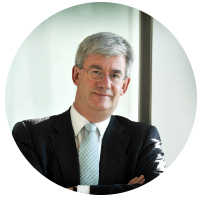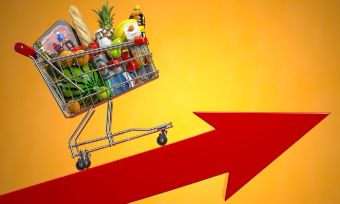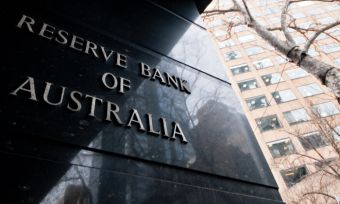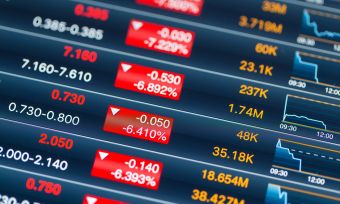There has been some speculation that there will be a recession in Australia. Canstar asked three experts for their thoughts. Here’s what they had to say.
Saul Eslake
I don’t think a recession – which, incidentally, I define as a period in which unemployment rises by 1½ percentage points or more, in 12 months or less, and then until it starts coming down, rather than “two consecutive quarters of negative real GDP growth” – is likely. What I mean by that is that the probability of a recession, thus defined, is less than 50%. But it’s not zero either. I’d put it at about 20% to 25%.
Let me try to explain…
Like central banks in most other ‘advanced’ economies, the Reserve Bank of Australia (RBA) is now tightening monetary policy, quite significantly and rapidly, in order to bring inflation down from its highest levels in over 30 years, to within its target range (which for Australia is 2%-3%).
The way that will work, if it does, is by slowing the rate of growth in aggregate demand (spending by households and businesses) so as to make it more difficult for businesses to pass on cost increases to their customers in the form of higher prices, and, as a secondary consideration, to prevent the labour market from becoming even tighter than it already is so as to ensure that rapid wage increases don’t become an additional source of inflationary pressure (as they have done in a number of other countries).
It does that by forcing households with mortgages to divert more of their incomes to interest payments, which means they have less to spend on other goods and services, thereby slowing aggregate demand. And businesses, conscious that the rate of growth in aggregate demand is likely to slow, will also spend less and probably reduce hiring. Higher interest rates will also dampen demand through other channels such as reducing property prices and hence personal wealth.
One advantage Australia has, in this context, compared with the US, the UK and New Zealand (among others) is that, so far, wage pressures haven’t made any material contribution to rising inflation. That should mean that, all else being equal, the RBA doesn’t need to raise interest rates as aggressively as central banks in those countries where wage pressures have been an important contributor to higher inflation might need to do (since inflation is lower here than in those other countries).
Other advantages compared to some other countries include our stronger-than-average population growth (assuming migration continues to pick up after stopping for two years during COVID-19), and the strength of our exports, particularly of energy products (which provides some offset to the loss of national income resulting from higher oil prices).
The challenge facing the RBA is to calibrate the ‘right’ amount of monetary policy tightening (increases in interest rates) so that they raise rates sufficiently to quell inflation but not so high as to push the economy into recession. That’s not an easy task. But they have done it before – for example in 1994 – having previously got it very wrong in the late 1980s and early 1990s.
Part of the reason the risk of recession isn’t zero is that they could get it ‘wrong’ this time – especially since with household debt being much higher than it was 20 to 30 years ago, the economy is probably much more sensitive to movements in interest rates than it used to be.
Another source of recession risk is that, even if the RBA doesn’t push Australian interest rates up ‘,too high’, central banks in the US and/or Europe could end up doing so, pushing their economies into recession, with flow-on consequences for other economies – including Australia.
On two previous occasions when the US economy has gone into recession – after the ‘tech wreck’ in 2000, and during and after the global financial crisis in 2007-09 – we didn’t follow the US into recessions of our own. But that was in part because there was an offsetting effect from very strong growth in China. That seems far less likely in current circumstances, given the ongoing slowdown in the Chinese economy, and the apparent reluctance of the Chinese economies to embark on big stimulus programs as they have done in the past.
These risks are probably rising but they are, I think, still well under 50%.

Saul Eslake is an independent economist, speaker, company director and Vice-Chancellor’s Fellow at the University of Tasmania.
Craig James
In the past, there was a fear of even using the dreaded ‘R’ word or recession in conversations. But over the past decade, there has been a greater appreciation of economic cycles. That is, sometimes there are economic expansions or even booms. And, at other times, economies can experience weak growth or even go backwards for a period of time.
So, after the strong post-pandemic economic recovery, is there a greater chance of a recession emerging? Yes, especially with interest rates being quickly lifted to more ‘normal’ levels in an attempt to get inflation back under control.
But do I think that a recession can be avoided? Yes, most definitely. Central banks have more expertise in dealing with economic shocks and have developed a broader skill set. They are also more likely to work together to deal with the issues of the moment.
Just as economies avoided recession or prolonged and deep downturns after the pandemic emerged, they can deal with the post-pandemic recovery. But much depends on how central banks like the Australian Reserve Bank communicate their policy intentions. And, much also depends on the credibility of its actions and words.
What is also important is the start-off point or the set of economic circumstances. In Australia, unemployment is near 50-year lows. The trade surplus is at record highs. Retail spending is at record highs. Wealth is also at record highs, via higher home prices and share prices. And consumer and business balance sheets are in strong shape, courtesy of conservative financial practices when the pandemic raged. Budgets of federal and state governments are also well positioned to support economies at a time when interest rates are ‘normalising’.
In other words, the structure of the economy is solid. If the economy did go backwards for two straight quarters, that is, entered a recession, there are good reasons to suggest that it would merely be the pause that refreshes.

Craig James is chief economist at CommSec. Craig is a regular on TV and radio and also does newspaper interviews and writes regular commentaries.
Diana Mousina
There is a lot of talk about a potential recession, either in Australia or globally. The reasons behind the concern are that interest rates are going up, inflation is high, economic activity is slowing from its post-pandemic high, the sharemarket has not had a good run this year and there are some other recession indicators such as the fact that the US 2/10 year bond yield is inverted.
While the risk of a recession has gone up we think that Australia will avoid a recession in 2022-2023 but the risks are higher in the US where interest rate hikes are likely to be more aggressive to get inflation down.
In Australia, we expect GDP growth to slow to around 2% over the year to December 2023, as consumer spending growth weakens as interest rates rise, housing construction growth is soft as we’re in a higher rate environment and because a lot of demand was brought forward in 2020-2021. Business investment growth is expected to be okay but will also be negatively impacted by high inflation and lower consumer demand, government spending is likely to be positive but lower than in recent years as budget deficits are reduced while the export sector should remain solid as demand for commodities is high.
The area to watch is the consumer and how consumer spending responds to interest rate hikes. The experience so far shows a fast slowing of spending is underway, consumer sentiment is at recession-like levels, retail spending growth has started to slow and home price declines are accelerating since the RBA started lifting the cash rate. In our view, the peak in the RBA cash rate will be around 2.60% which should be enough to get inflation down.

Diana Mousina is senior economist at AMP Capital. Diana makes regular appearances on mainstream Australian television networks and radio stations.
Cover image source: pogonici/Shutterstock.com
This content was reviewed by Editorial Campaigns Manager Maria Bekiaris as part of our fact-checking process.







Share this article